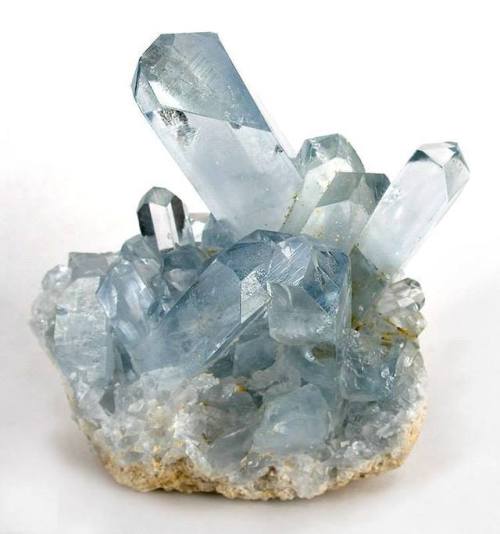CelestineCelestine (also known as celestite) is a mineral composed by strontium sulfate (SrSO4). Its
CelestineCelestine (also known as celestite) is a mineral composed by strontium sulfate (SrSO4). Its name comes from the Latin word Caelestis, which means “Heavenly” or “From heaven/From the sky”, since celestine’s typical color is sky-blue. This mineral is colorless without any impurities, but when these are present, celestine presents a varied range of colors. Although sky-blue is the most common color, crystals can also be orange, light-brown, yellow, greenish-blue or gray. In some cases, crystals can be somewhat multicolored.Celestine is typically found in sedimentary rocks, frequently associated with other minerals, such as gypsum, halite and barite. This mineral is present all around the world, but the most famous specimens are possibly the ones from Madagascar, because of the big blue celestine geodes.Although very beautiful, celestine is quite soft (only 3 to 3.5 in the Mohs scale) so it is not used in jewelry. Celestine specimens are preserved for ornamental purposes by collectors. Since celestine is the main source of strontium, this mineral is usually used in fireworks to produce the color red or to function as a stabilizer of fireworks mixtures.SuSources:http://bit.ly/2vQw3aehttp://bit.ly/2eR0pmhhttp://bit.ly/2y0OwT1Photo credits:http://bit.ly/2gYEha4 - photo by Rob Lavinsky/iRocks.comhttp://bit.ly/2xWfZV1 - photo by Parent Géryhttp://bit.ly/2fdJGtQ - photo by Rob Lavinsky/iRocks.com -- source link
#celestine#celestite#geology#mineralogy#strontium#sulfur#mineral


